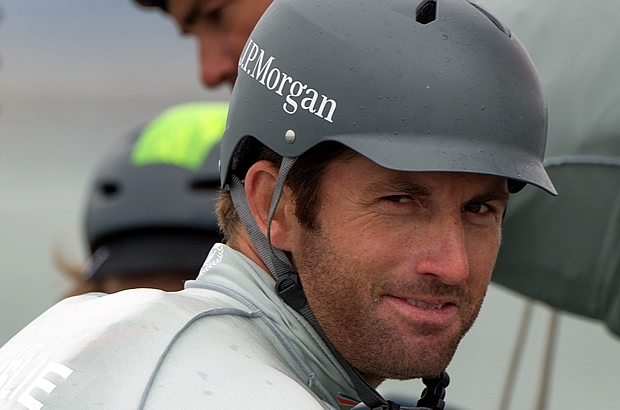
British 35th America's Cup campaign
At London 2012 Ben Ainslie achieved the incredible feat of outstripping Paul Elvström’s record to become the most successful Olympic sailor of all time, with four gold medals and one silver. For this he was deservedly knighted. This achieved some good coverage in the national press at the time, but oddly represented a mere whimper compared to the furore caused by his part in Oracle Team USA winning the America’s Cup last month.
Oracle’s turnaround victory, that had the effect of doubling the length of the America’s Cup competition, also turned around the fortunes of the event itself. Had the score gone 9-1 to Emirates Team New Zealand, the taste of the one boat races and sorely uneven matches that featured in the Louis Vuitton Cup, would have remained in people’s mouths.
But fortunately it didn’t and since returning from San Francisco, Ainslie has been riding the crest of a wave of media interest, thanks to the integral role he played in Oracle Team USA’s successful defence. But equally impressive is how the event and the giant airborne catamarans racing around San Francisco at unimaginably fast speeds - their body armour-clad crew stepping off them at the end of the day like astronauts - engaged the general public with sailing in a way that we haven’t witnessed in the UK since Ellen MacArthur’s solo round the world record owned the headlines eight years ago. This was exactly as the architects of the 34th America’s Cup, Ellison and Russell Coutts, had always hoped would happen and we sceptics never thought they’d achieve.
“It was close to being a 9-1 or a 9-0 whitewash,” admits Ainslie. “Thankfully it turned itself around and became one of the best Cups ever. We were very lucky in many ways that that was the case, not least for Oracle but for sailing worldwide, because it turned it into an amazing spectacle. There is still a lot of work to be done, but it was a success. It proved that you can match race in multihulls and certainly, from the response that we have seen from around the world, we would be crazy to move away from this style of boat and this format.”
Of course the live television offering helped, with the on-board video and sound used in conjunction with Stan Honey’s impressive graphics setting a new benchmark in conveying yacht racing to the masses. While races were covered live on YouTube, in the UK it was initially followed by Sky Sport and then, as media interest built, it was also picked up by the BBC.
According to Ainslie this phenomenon wasn’t just in the UK. “I think even in the States, in Australia, New Zealand, Italy and other sailing-mad countries it has been a huge success. People think it is a) really exciting and cool and b) understand the course because of the graphics - that side of it has come along a huge way with the TV production.”
Going forwards
For Ainslie this could not have been timed better as it is during these next vital weeks that he is attempting to put together his own British campaign for the 35th America’s Cup.
“The focus is to try and do the America’s Cup,” confirms Ainslie of his plans. “If we did it with a British team we need to be in a spot where we could be successful - that is the challenge, because if you don’t, you may as well not bother, it would be more damaging than not competing at all. So that is the first goal - to see if we can pull that off.”
Inevitably the issue is one of funding. To mount a campaign Ainslie has stated that his required war chest is £80 million, but advises this to be for a worst case scenario. “Hopefully it will be less than that, but we don’t know until we see a Protocol.” This compares with the US$ 110 million he says Emirates Team New Zealand spent for the 34th America’s Cup while he guestimates Luna Rossa spent US$ 80-90 million. He won’t divulge the Oracle Team USA budget and believes that Artemis’ budget was “quite economic”, although we would query this – the Swedish campaign ran for the full duration, had an ORMA 60 trial horse for a wing they destroyed, an AC45, two AC72s (one that needed fixing before it was even launched), a monstrous-sized staff and were not skimping on salaries...
With such opposition, Ainslie observes: “You are playing against Oracle and Artemis, who have budgets such that they always know they are going to get to the end of the project. You need the underwriting to guarantee that you are going to get to the end and that is where we need to be.”
Also Ainslie is bucking tradition. Traditionally Cup campaigns come together because someone with suitably a large cash surplus - these days this requires a disposable eight or even nine figure sum - decides they want to have sport’s oldest trophy on their mantelpiece. This is the way it has worked since the mid-19th century and recent exponents in the UK have included Sir Keith Mills, Peter Harrison and Peter de Savary.
Since there appears to be no single individual in the UK with the desire or the resource to fund an entire British America’s Cup campaign to level Ainslie requires, he is attempting to approach this from a different direction, more like Team New Zealand or modern Formula 1, where professional sports teams attract funding through their track record and kudos.
Of the four campaigns for the 34th America’s Cup, the Team New Zealand model is probably the closest model, where capable Managing Director Grant Dalton effectively scooped up funds from wherever it was available – from private backers such as Swiss-Italian businessman and profound Kiwiphile, Matteo di Nora, and other figures from the New Zealand business world, the NZ$36m grant from the New Zealand government, plus title sponsorship from Emirates Airline, backing from long term Team New Zealand sponsors, Omega and Toyota, and new sponsorship from Nespresso, Camper (who were of course behind the TNZ run Volvo Ocean Race campaign) and Skyy Vodka.
Ainslie also aims for his challenge to be financed by a mix of private and commercial backers with the latter making up as much as 70% of the campaign budget. However he says that initially the campaign will have to rely on private funding as it is unrealistic to expect any commercial deals to be signed until the middle of next year, given that the Protocol for the 35th America’s Cup isn’t likely to be finalised between the defender, Oracle Team USA and the Challenger of Record, the Hamilton Island Yacht Club, until later this year, or possibly early next.
So where might this private backing come from? “There are some guys who have been really supportive of British sailing like Keith [Mills] and Charles [Dunstone] and a few others who I’m sure would be interested,” says Ainslie. “But it is a lot of money you are asking to people to put their hands in their pockets for, so it has to be done properly and it has to have a real chance of winning.”
Fortunately Ainslie already has a number of commercial backers in place. In particular the banking giant JPMorgan has supported his campaigns and had its name on the Ben Ainslie Racing AC45.
So they might become title sponsor? “Yes, that is something we’ve talked to them about for quite a while and they are obviously very interested and it helps us a lot that the America’s Cup is in the USA rather than New Zealand.”
Adding to the pressure is that there is a very tight time frame. If the UK is to mount a campaign with a serious chance of winning – and Ainslie has no interest in doing it any other way – then the recruitment process cannot start soon enough, in particular at this stage signing up designers and other PhDs with the specialist skills necessary to conjure up a winning boat. The maximum amount of run-up to the 35th America’s Cup is required if a new team is to stand any chance of being competitive against the three (possibly four - if Team New Zealand returns) teams returning, all having benefitted from past experience of the new look America’s Cup.
Ainslie observes that the pool of people with experience from the 34th America’s Cup, and who are available, is limited. “If you leave it too long, they will get snapped up.”
So does he have a deadline? “Probably the end of this month...not much more time than that. It is a new style of sailing, so there are a lot of talented sailors out there who can be good at this game, but at the same time there are only a small group of people who were involved in this last Cup and you are going to need a proportion of those guys, otherwise you are really starting from a long way back.”
And of course this comes at a time when Luna Rosa, Artemis, Oracle Team USA are all hiring.,
Fortunately with the next Olympic Games taking place in 2016, Ainslie reckons it is unlikely that the 35th America’s Cup will be held until 2017. This extra year could level the playing field in favour of new teams looking to get into the competition, although it will do nothing to reduce campaign costs.
Obviously putting together such a package in such a short space of time is a big ask and for Ainslie will represent the hardest of the present options available to him. If the British campaign doesnt’ come off, the path of least resistance would be continuing with Oracle, which is also certain to keep his bank manager happiest. And if worst came to the worst, his best friend Iain Percy is now running Artemis Racing and presumably the door might be open to him there if Nathan Outteridge is poached to race for the new Australian Challenger of Record.
35th America’s Cup
Having been part of Oracle Team USA, Ainslie obviously has the inside of track on the feeling within the defender’s camp regarding how the 35th America’s Cup might shape up.
For example he reckons that they will stay with the AC72 in some form: “There seems to be a lot of support for that, but bringing in a one design element - maybe the wing or the hulls - and leaving the foils as the development route.
“I know certainly that all the talk within Oracle, before and during the Cup, was to try and reduce the cost significantly, so maybe only building one boat and not start sailing it until quite late. It is the people that are the cost, so having a 50ft boat instead of a 72ft boat doesn’t really make any difference, whereas sailing later and only building one boat would help a lot with reducing costs.”
And stick with the wing? “They are not very practical and they are a pain in the arse for the shore crew, but they make the boat so much more powerful and attractive that, again, I think it would be tough to move away from them. As soon as you start foiling you need the wing. Without the wing - foiling gybes you could probably do, but I think tacking would be a lot harder.”
Ainslie also believes the crew ‘grind-off’ element should continue, despite the huge exertion not obviously achieving anything (ie no sails going up or down, etc). Even he and Tom Slingsby got a work out on the pumps grinding the wing on the Oracle Team USA AC72. “I think it is really hard work for the guys, but they really felt like athletes and they had to train and perform like athletes, which I think is good for the sport. Sitting around pressing buttons is not really the right image.”
A significant issue if the 35th America’s Cup was held in AC72s again, is what to do with teams with existing boats? “If they are only going to allow teams to build one boat, they’d have to look very carefully at what the existing teams do with their existing 72s, because it is a huge disadvantage to a new team, not already having a 72. You can say they can buy one of the existing boats, but there are really only two boats available.”
There has also been much talk of a nationality rule. Ainslie does not overly favour this. “I think a very tight nationality rule would be a mistake, because it would make it very hard for Artemis [being Swedish] or if Alinghi wanted to get back into the game. Perhaps a 50-50 rule might be something that would work...I definitely don’t see it going full scale.”
Obviously a nationality rule would make any sort of competitive Cup campaign unfeasible for new countries like China or Korea, if they wished to participation. So maybe a sliding scale of some description based on past participations? “You have to give them an opportunity. Some kind of nationality rule would be good, but you don’t want to write these other teams out of the game.”
Ainslie agrees that it seems likely that the AC45s will be back as the warm-up circuit for the 35th America’s Cup, but with the boats converted to foiling (as some already are). However a circuit for the boats probably won’t be up and running until 2015 and there are additional problems once they get airborne, he warns: “Then become quite powerful machines and you have to be careful with the safety side of it. You can’t have a team turning up to a World Series event who hadn’t sailed these boats before... As soon as you start foiling, it becomes a different game.”
Looking back
Having not spoken to Ainslie since he won the America’s Cup with Oracle Team USA, we are obviously keen to get his take on how he felt it went.
Ainslie started out with the campaign helming one of the American team’s AC72s as Jimmy Spithill pre-AC sparring partner. His boat was the team’s first foray in foiling and gained a reputation of being difficult at times to coax around the race course. “It was a bit of a wild beast! It was interesting times. It was good fun.”
He of course only joined the race team proper when he took over John Kostecki in the tactician’s role. “It wasn’t like he made any real mistakes,” says Ainslie of why JK was eased. “It was just that things clearly weren’t going well and you either just say ‘we are just not going to make any changes and hopefully things will sort itself out’ or ‘we are going to make a change and hopefully that will spur something into action’. I think it was more to get a new face on to the boat and help lift the spirits a bit as much as anything.”
Obviously known for being behind the wheel, the number of previous occasions Ainslie has raced as a tactician he can count on one hand. However clearly he took to it well and says he thoroughly enjoyed it. Certainly the dynamic at the back of the boat changed with Ainslie becoming the most vocal among Spithill’s afterguard.
“I know it sounds a bit corny, but I did think a bit about Bart [Andrew Simpson] and Iain [Percy], because that was how I was used to working with them when we sailed together over the years. They were always super positive and there was a lot of communication, so I certainly tried to use an element of that because that always worked well and that clearly worked well in this instance, trying to get a bit more out of Tommy and just trying to be positive.”
Ainslie admits that after race six there was a watershed moment within Oracle Team USA. “The first day I sailed on the boat, we sailed alright but we were really destroyed upwind. That was the day we came back and all the designers and the sailors just sat in the sailing room and we said ‘look, if we don’t do anything, we are going to lose. What can we do?’
“Contrary to public opinion, the changes weren’t massive. We didn’t fly in a bunch of boatbuilders, we didn’t have this ‘herbie’ or whatever it is called. We just made some small set-up changes to the wing and the finish on the foils and the technique of sailing the boat and it just started clicking. Each day we got faster and faster, developing the technique around that new set-up.”
They changed the depth set-up on the wing and according to Ainslie this gave them more power to play with, enabling them to improve some of the sailing techniques, most notably their ability to foil upwind, particularly in around 14-15 knots. “We just got better and better at that each day and we got more confident. We got on a roll from there.”
Over the allegations that the team had some device that automatically controlled the rake of their daggerboard, Ainslie maintains helmsman Jimmy Spithill operated this manually and there weren’t even any electronics to tell him what the optimum rake position of the foil should be. It was all much simpler: “He was going off the bow position. There is nothing more to it than that.”
The rake adjustment was driven hydraulically, powered by the two grinders at the front of the cockpit.
We discuss the possibility of a gyro-based system hooked up to control daggerboard rake being made legal for the 35th America’s Cup (but still hydraulically powered by the crew) as it would make the boats more stable while foiling, in turn improving safety. However Ainslie reckons that being able to control the rudder elevators/wings while racing would be a much bigger improvement.
Outside of the AC
With the America’s Cup, in one role or another, being his sole focus, there won’t be much opportunity for any non-AC related sailing going forwards for Ben Ainslie.
He recently returned briefly to the Alpari World Match Racing competing in the Argo Group Gold Cup in Bermuda (see pic above), but this was more of a holiday/fund raising effort reunited his old TeamOrigin match racing crew in aid of the Andrew Simpson Sailing Foundation.
Previously he had contemplated a Star campaign for Rio 2016 until the boat got canned. There is still the smallest iota of possibility that the Star might receive an 11th hour reinstatement, given that the host nation has such a strong track record in the class. However, Ainslie says: “Even if the Star came back in, I’m not sure it is really an option for me.”
Looking beyond the AC, surprisingly some of Ainslie’s ambitions lie offshore. He says he has always liked the idea of making attempt on the Jules Verne Trophy record, for sailing non-stop around the world. He came close to putting together a campaign for that with JPMorgan using the former Banque Populaire maxi-tri, only that he was pipped to the post when it was acquired by Spindrift Racing.
And the Volvo Ocean Race? “It will be interesting to see how it goes with the new class. I hope it is a success, because it is a great race with a great history. Maybe in the future that would be an option.” His father Roddy skippered a boat in the first Whitbread Round the World Race.
Anyway it seems that the man who is increasingly becoming sailing’s answer to David Beckham has his hands full for the foreseeable.

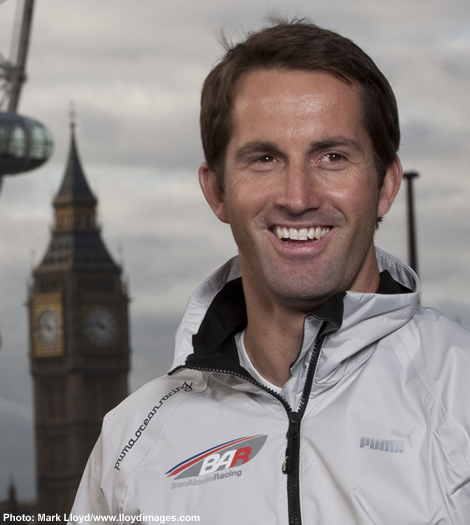
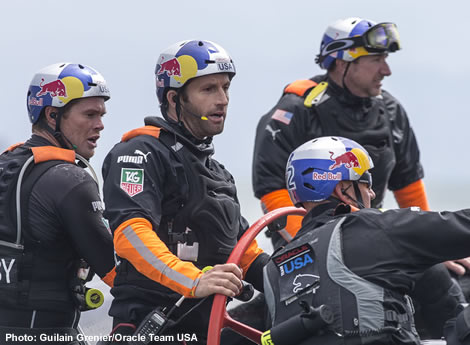
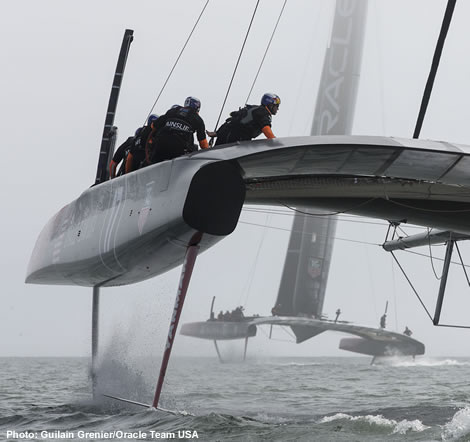
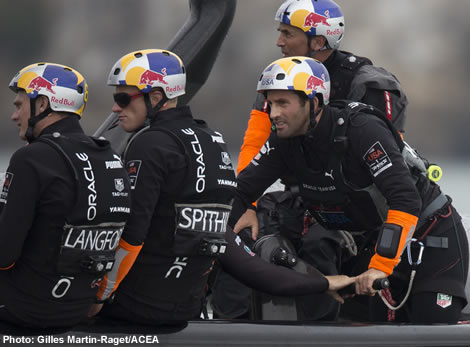
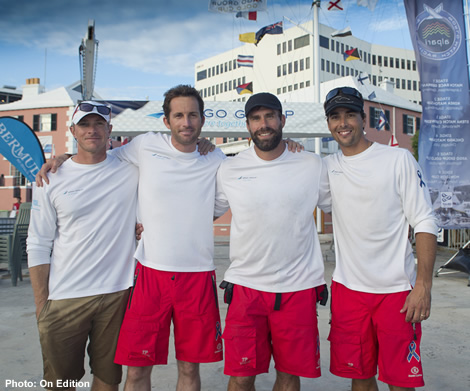







Latest Comments
david_collins 24/10/2013 - 20:17
That you can even write such an interesting article again points to the fact that AC34 was a real game changer!vincent 24/10/2013 - 09:43
Thank's James !KingMonkey 23/10/2013 - 18:22
Excellent article as ever. . . it makes me wonder how far he can go in discussions with potential sailors/designers right now. He presumably must have done quite a bit of this?Add a comment - Members log in